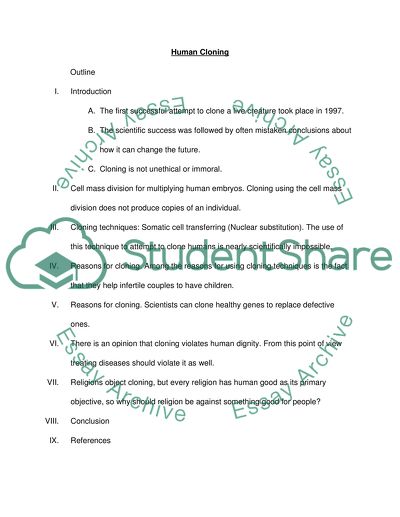Cite this document
(Cloning as not Immoral or Unethical Term Paper Example | Topics and Well Written Essays - 1899 words - 10, n.d.)
Cloning as not Immoral or Unethical Term Paper Example | Topics and Well Written Essays - 1899 words - 10. Retrieved from https://studentshare.org/science/1553196-research-paper
Cloning as not Immoral or Unethical Term Paper Example | Topics and Well Written Essays - 1899 words - 10. Retrieved from https://studentshare.org/science/1553196-research-paper
(Cloning As Not Immoral or Unethical Term Paper Example | Topics and Well Written Essays - 1899 Words - 10)
Cloning As Not Immoral or Unethical Term Paper Example | Topics and Well Written Essays - 1899 Words - 10. https://studentshare.org/science/1553196-research-paper.
Cloning As Not Immoral or Unethical Term Paper Example | Topics and Well Written Essays - 1899 Words - 10. https://studentshare.org/science/1553196-research-paper.
“Cloning As Not Immoral or Unethical Term Paper Example | Topics and Well Written Essays - 1899 Words - 10”, n.d. https://studentshare.org/science/1553196-research-paper.


